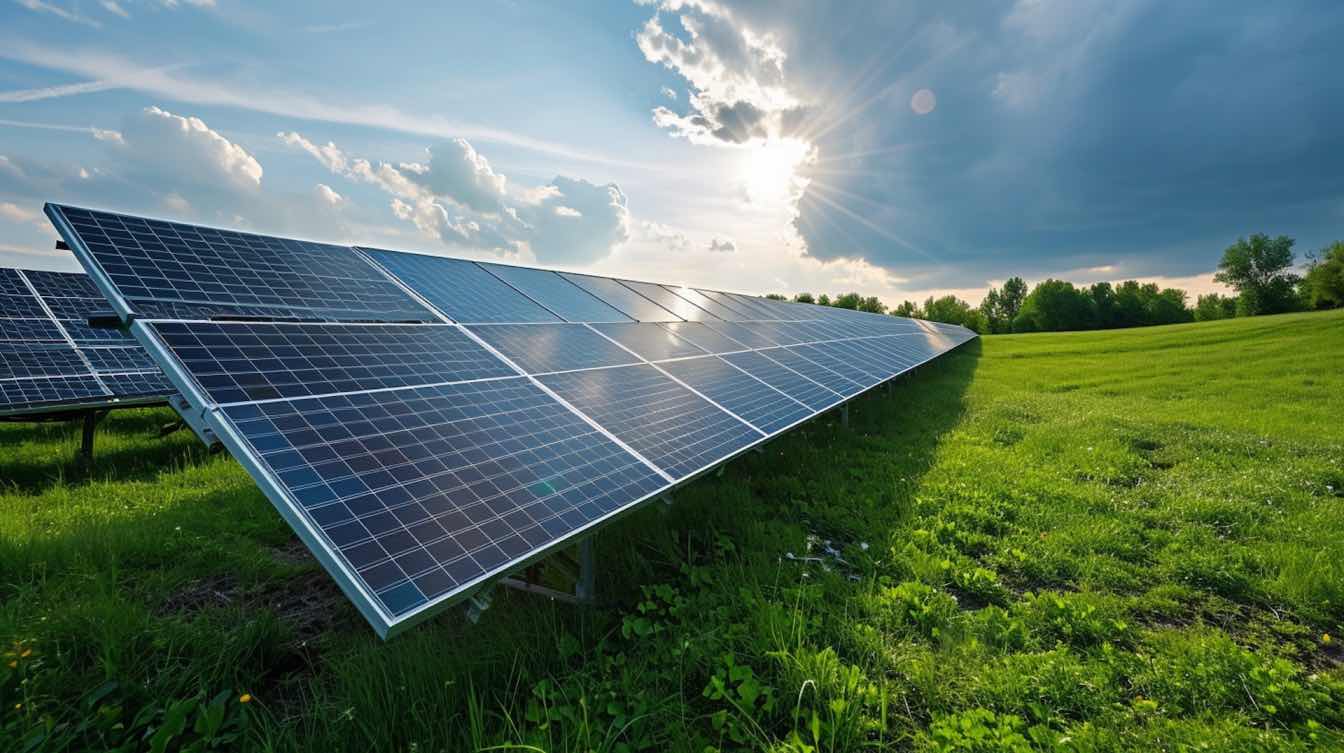Introduction:
In an era where sustainable practices are becoming increasingly crucial, the agriculture sector is embracing innovative solutions to meet the growing demand for food while minimizing environmental impact. One such groundbreaking technology that holds immense promise is agricultural solar photovoltaics, offering a double harvest by providing both energy and crops. Today's electricity is undoubtedly tomorrow's future, and integrating solar power into agriculture is a step towards a more sustainable and resilient farming ecosystem.
Reasons why we need Agricultural Solar Photovoltaics:
1.Sustainability in Farming:
Agricultural practices have often been associated with resource-intensive methods that can lead to environmental degradation. Agricultural solar photovoltaics present an opportunity to shift towards more sustainable farming practices. By harnessing solar energy, farmers can reduce their dependence on non-renewable energy sources, contributing to a cleaner and greener agricultural sector.
2. Energy Independence for Farmers:
With the rising costs of conventional energy sources, farmers are increasingly burdened by high electricity bills. Integrating solar photovoltaic systems allows farmers to generate their own electricity, providing a degree of energy independence. This not only reduces operational costs but also insulates farmers from fluctuations in energy prices, ensuring a more stable and predictable budget.
3. Climate Resilience:
Climate change poses a significant threat to agriculture, with unpredictable weather patterns affecting crop yields. Agricultural solar photovoltaics can act as a climate-resilient solution by providing a consistent and reliable source of energy, irrespective of external weather conditions. This resilience ensures that essential farming operations are not disrupted, even in the face of adverse climate events.
Double Harvest – Benefit Twice:
The concept of a double harvest encapsulates the dual benefits of agricultural solar photovoltaics – generating renewable energy while concurrently cultivating crops. This innovative approach maximizes land use efficiency, making it a win-win for farmers and the environment.
1. Optimal Land Use:
Agrivoltaic systems involve the co-utilization of land for both solar power generation and agriculture. By installing solar panels above crops, farmers can optimize land use, making the most of available resources. This synergy between energy production and crop cultivation results in a double harvest – benefiting both the energy and agriculture sectors simultaneously.
2. Increased Crop Yields:
Studies have shown that the presence of solar panels above crops can create a microclimate that positively impacts plant growth. The shading provided by the solar panels reduces water evaporation from the soil, leading to improved water-use efficiency. Additionally, the panels act as a barrier against extreme weather conditions, protecting crops and enhancing overall yield. This dual functionality of agrivoltaic systems contributes to increased agricultural productivity.
Grow Sustainably:
Sustainable agriculture is no longer a choice but a necessity. As the global population continues to grow, the demand for food is escalating, placing immense pressure on traditional farming practices. Agricultural solar photovoltaics offer a sustainable solution to address this challenge by integrating renewable energy into the agricultural landscape.
1. Reduced Carbon Footprint:
Traditional farming methods often rely on fossil fuels for machinery, irrigation, and other energy-intensive processes. The integration of solar photovoltaics helps reduce the carbon footprint of agriculture by replacing fossil fuels with clean, renewable energy. This transition contributes to mitigating climate change and aligns with global efforts to achieve a more sustainable future.
2. Resource Efficiency:
Solar photovoltaic systems operate on sunlight, a resource that is abundant and freely available. By harnessing solar energy, farmers can significantly reduce their reliance on finite resources such as fossil fuels and grid electricity. This not only conserves valuable resources but also promotes resource efficiency in agriculture, making the sector more sustainable in the long run.
Today's Electricity is Tomorrow's Future:
The transition to renewable energy is an imperative for a sustainable future, and the agricultural sector can play a pivotal role in this transition. Today's electricity consumption patterns directly influence the quality of tomorrow's environment and resources. Integrating solar photovoltaics into agriculture aligns with the vision of a future where clean energy is the norm.
1. Environmental Stewardship:
Embracing solar photovoltaics in agriculture demonstrates a commitment to environmental stewardship. By reducing reliance on conventional energy sources, farmers contribute to the preservation of ecosystems, biodiversity, and overall environmental health. This proactive approach positions agriculture as a key player in building a sustainable future for generations to come.
2. Renewable Energy Education:
The integration of solar photovoltaics in agriculture also serves as an educational tool for promoting renewable energy awareness. Farmers adopting these technologies become ambassadors for sustainable practices, inspiring their communities and the wider agricultural industry to embrace clean energy solutions. This ripple effect fosters a culture of environmental responsibility and sets the stage for a more sustainable tomorrow.
How Does It Benefit Farmers?
3. Financial Savings:
The initial investment in solar photovoltaic systems may seem significant, but the long-term financial benefits outweigh the upfront costs. By generating their own electricity, farmers can significantly reduce or eliminate their energy bills, leading to substantial savings over the system's lifespan. Government incentives and subsidies further enhance the financial viability of adopting solar technology.
4. Diversification of Income Streams:
Beyond the savings on energy bills, farmers can also benefit from additional income streams through the sale of surplus energy back to the grid. Many regions incentivize the production of renewable energy, allowing farmers to monetize excess electricity generated by their solar photovoltaic systems. This diversification of income sources adds a layer of financial resilience to the agricultural enterprise.
Types of Agrivoltaic Systems:
1. Fixed Tilt Systems:
Fixed tilt agrivoltaic systems involve mounting solar panels at a fixed angle to optimize sunlight exposure. While this type of system is relatively simple and cost-effective, it may not maximize energy production or crop yields as efficiently as other adjustable alternatives.
2. Seasonal Tilt Systems:
Seasonal tilt systems allow for the adjustment of solar panel angles based on the changing seasons. This adaptability ensures that the panels capture the maximum amount of sunlight throughout the year, optimizing both energy generation and crop growth. Seasonal tilt systems strike a balance between efficiency and cost-effectiveness.
3. Tracking Systems:
Tracking agrivoltaic systems incorporate mechanisms that follow the sun's path, continuously adjusting the orientation of the solar panels for optimal sunlight exposure. While tracking systems are highly efficient, they tend to be more complex and costly. The increased energy production, however, may justify the higher initial investment.
Agrivoltaics Advantages:
1. Land Use Efficiency:
One of the primary advantages of agrivoltaic systems is their ability to optimize land use. By utilizing the same piece of land for both solar power generation and agriculture, farmers can make the most of limited resources, promoting sustainability and efficiency.
2. Increased Crop Resilience:
Agrivoltaic systems provide a protective canopy over crops, shielding them from extreme weather conditions such as hailstorms and excessive sunlight. This increased resilience contributes to higher crop yields and overall farm productivity.
3. Water Conservation:
The shading effect of solar panels in agrivoltaic systems reduces water evaporation from the soil, leading to improved water-use efficiency. This is particularly crucial in regions facing water scarcity, where every drop of water counts for sustaining agricultural activities.
4. Energy Diversification:
Integrating solar photovoltaics into agriculture allows.





